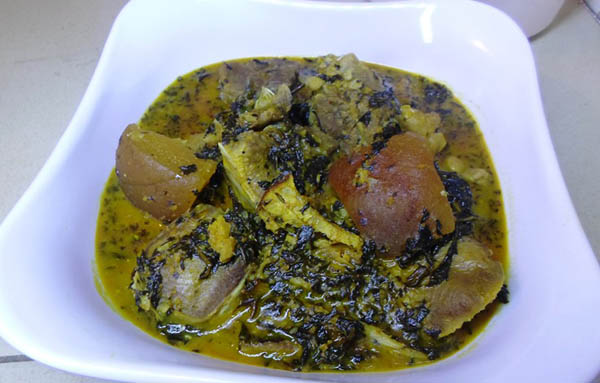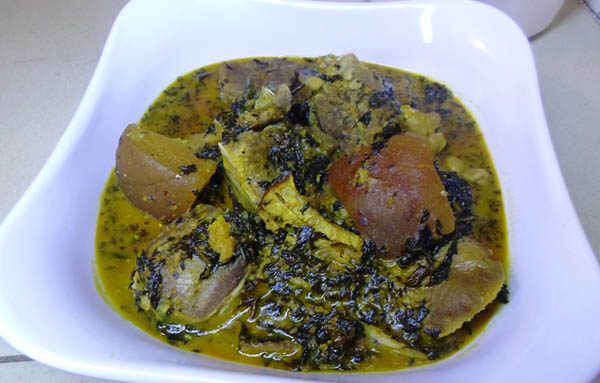One consistent, primary concern of humans is food. However, the food choices we make are largely dependent on our culture and interactions. This is why the Ibibio man who has lived in Lagos all his life will be as comfortable with Yoruba food. Many years ago, people discovered that some foods were medicinal. However, the consumption of the same plant as food or medicine was dependent on such factors as which part of the plant is used, the season of the year and physiological condition of the person using the crop. (Kuhnlein et al, 2009).
On our history segment today is Ofe Onugbu. It is a traditional food that is indigenous to the Igbo people of Anambra State. Bitter leaf (onugbu) is the only vegetable used in making this soup. Bitter leaf is obtained from the leaves of a diminutive evergreen shrub called Vermoica which grows throughout Nigeria. It is a medicinal plant. It is allegedly used in the treatment of diabetes, indigestion, and diarrhea amongst others.
Contrary to its name, the bitter leaf used in making this soup is not bitter. In fact, before the leaves are added to the soup, they are washed thoroughly to eliminate the bitter taste. Ofe onugbu ndi Anambra is prepared with wrapped locust beans locally known as ogili isii. It gives this soup its unique flavor. When the right kind of ogili (not the watered down version) is used in preparing this soup, the aroma is so strong and refreshingly nice that it travels through the compound causing people’s mouths to water.
Ofe onugbu is thickened with cocoyam not achi or ofor. Anambra bitter leaf is usually long because it is hand washed. This is opposed to the pounded version that is common in Rivers and Akwa Ibom states. Other ingredients for preparing this soup includes stock fish, assorted meat, crayfish, pepper, stock cubes, salt, palm oil, dry fish. These ingredients can be gotten from local markets within the country. Let me quickly add that when the palm oil extract from banga is used in making the soup, the taste is divine.
Finally, ofe onugbu in Anambra State is a soup in its own right. It can be enjoyed with eba, fufu, pounded yam, semo, wheat and even amala.
References
Emma Thrussell, “A Recipe for Identity: Food and Culture in Oaxaca, Mexico,” A thesis Submitted for the degree of Doctor of Philosophy, Discipline of Anthropology, University of Adelaide, 2015
Ken Albala, Food: A Cultural Culinary History (Virginia: The Great Courses, 2013)
Featured image source: Nigerian Foods


